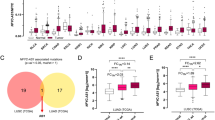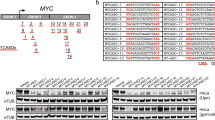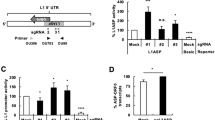Abstract
One of the distinguishing features of malignant tumor cells is the ability to proliferate in an anchorage-independent manner; methods that effectively suppress this phenotype may be applicable to the therapeutic inhibition of the malignancy of cancers. Interfering RNA is a potentially powerful tool for cancer therapy because of its specificity of target selection and remarkably high efficiency in target mRNA suppression. We studied the use of two knockdown strategies, antisense oligo DNA (AS-ODN) and small interfering RNA (siRNA), and showed how the anchorage-independent proliferation of malignant cells could be blocked efficiently. Anchorage-independent proliferation of rat fibroblasts transformed with v-src was suppressed with only a single 1-μ M dose of AS-ODN; similar suppression using siRNA required treatment with 1 nM siRNA every 12 h. With our experimental system, the molecular stability of AS-ODN allowed the use of a simple treatment regimen to control the amount of the target molecule, providing that the treatment dose was sufficiently high. In comparison, siRNA treatment was effective at lower doses, but more frequent treatment was necessary to achieve the same suppression of proliferation.
This is a preview of subscription content, access via your institution
Access options
Subscribe to this journal
Receive 12 print issues and online access
$259.00 per year
only $21.58 per issue
Buy this article
- Purchase on Springer Link
- Instant access to full article PDF
Prices may be subject to local taxes which are calculated during checkout






Similar content being viewed by others
References
Dove A . Antisense and sensibility. Nat Biotechnol 2002; 20: 121–124.
Ochiya T, Terada M . Antisense approaches to in vitro organ culture. Methods Enzymol 1999; 314: 401–411.
Akhtar S, Kole R, Juliano RL . Stability of antisense DNA oligodeoxynucleotide analogs in cellular extracts and sera. Life Sci 1991; 49: 1793–1801.
Fire A, Xu S, Montgomery MK, Kostas SA, Driver SE, Mello CC . Potent and specific genetic interference by double-stranded RNA in Caenorhabditis elegans. Nature 1998; 391: 806–811.
Fire A . RNA-triggered gene silencing. Trends Genet 1999; 15: 358–363.
Caplen NJ, Parrish S, Imani F, Fire A, Morgan RA . Specific inhibition of gene expression by small double-stranded RNAs in invertebrate and vertebrate systems. Proc Natl Acad Sci USA 2001; 98: 9742–9747.
Elbashir SM, Harborth J, Lendeckel W, Yalcin A, Weber K, Tuschl T . Duplexes of 21-nucleotide RNAs mediate RNA interference in cultured mammalian cells. Nature 2001; 411: 494–498.
Hammond SM, Caudy AA, Hannon GJ . Post-transcriptional gene silencing by double-stranded RNA. Nat Rev Genet 2001; 2: 110–119.
Sharp PA . RNA interference 2001. Genes Dev 2001; 15: 485–490.
Zamore PD . RNA interference: listening to the sound of silence. Nat Struct Biol 2001; 8: 746–750.
Bernstein E, Caudy AA, Hammond SM, Hannon GJ . Role for a bidentate ribonuclease in the initiation step of RNA interference. Nature 2001; 409: 363–366.
Hammond SM, Boettcher S, Caudy AA, Kobayashi R, Hannon GJ . Argonaute2, a link between genetic and biochemical analyses of RNAi. Science 2001; 293: 1146–1150.
Nykanen A, Haley B, Zamore PD . ATP requirements and small interfering RNA structure in the RNA interference pathway. Cell 2001; 107: 309–321.
Bertrand JR, Pottier M, Vekris A, Opolon P, Maksimenko A, Malvy C . Comparison of antisense oligonucleotides and siRNAs in cell culture and in vivo. Biochem Biophys Res Commun 2002; 296: 1000–1004.
Miyagishi M, Hayashi M, Taira K . Comparison of the suppressive effects of antisense oligonucleotides and siRNAs directed against the same targets in mammalian cells. Antisense Nucleic Acid Drug Dev 2003; 13: 1–7.
Brummelkamp T, Bemards R, Agami R . Stable suppression of tumorigenicity by virus-mediated RNA interference. Cancer Cell 2002; 2: 243–247.
Kawasaki H, Taira K . Short hairpin type of dsRNAs that are controlled by tRNAval promoter significantly induce RNA-mediated gene silencing in the cytoplasm of human cells. Nucleic Acids Res 2003; 31: 700–707.
Martinez LA, Naguibneva I, Lehrmann H, Vervisch A, Tchenio T, Lozano G et al. Synthetic small inhibiting RNAs: efficient tools to inactivate oncogenic mutations and restore p53 pathways. Proc Natl Acad Sci USA 2002; 99: 14849–14854.
McCaffrey AP, Meuse L, Pham TT, Conklin DS, Hannon GJ, Kay MA . RNA interference in adult mice. Nature 2002; 418: 38–39.
Song E, Lee S-K, Wang J, Ince N, Ouyang N, Min J et al. RNA interference targeting Fas protects mice from fulminant hepatitis. Nat Med 2003; 9: 347–351.
Verma UN, Surabhi RM, Schmaltieg A, Becerra C, Gaynor RB . Small interfering RNAs directed against beta-catenin inhibit the in vitro and in vivo growth of colon cancer cells. Clin Cancer Res 2003; 9: 1291–1300.
Zender L, Hutker S, Liedtke C, Tillmann HL, Zender S, Mundt B et al. Caspase 8 small interfering RNA prevents acute liver failure in mice. Proc Natl Acad Sci USA 2003; 100: 7797–7802.
Freedman VH, Shin SI . Cellular tumorigenicity in nude mice: correlation with cell growth in semi-solid medium. Cell 1974; 3: 355–359.
Tuschl T, Zamore PD, Lehmann R, Bartel DP, Sharp PA . Target mRNA degradation by double strand RNA in vitro. Genes Dev 1999; 49: 1793–1801.
Acknowledgements
We are grateful to Sayuko Kaminosono, Haruna Yamanami, and Kotaro Oka (Faculty of Science and Technology, Keio University, Kohoku-ku, Yokohama, Japan) for their kind help with the experiments and for providing the laboratory environment for this study. This study was supported by Special Coordination Funds for Promoting Science and Technology from the Ministry of Education, Culture, Sports, Science and Technology of Japan, and from Keio University's 21st Century COE Program for Understanding and Control of Life Function via Systems Biology.
Author information
Authors and Affiliations
Corresponding author
Rights and permissions
About this article
Cite this article
Hiroi, N., Funahashi, A. & Kitano, H. Comparative studies of suppression of malignant cancer cell phenotype by antisense oligo DNA and small interfering RNA. Cancer Gene Ther 13, 7–12 (2006). https://doi.org/10.1038/sj.cgt.7700869
Received:
Revised:
Accepted:
Published:
Issue Date:
DOI: https://doi.org/10.1038/sj.cgt.7700869
Keywords
This article is cited by
-
Development of a targeted siRNA delivery system using FOL-PEG-PEI conjugate
Molecular Biology Reports (2010)



